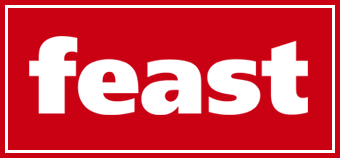-
Leading bathroom retailer, Sanctuary Bathrooms, speaks with industry experts and influencers, while diving into customer preferences and global innovations to share the top six bathroom trends for 2025.
-
Key 2025 trends include natural, earthy tones, Japandi-inspired minimalism, bold accent colours, and textured materials that create calming, stylish spaces.
-
The declining trends in 2024 portray a shift away from clinical, minimalist designs toward warmer, more functional, and personalised spaces.
[Image credit: Sanctuary Bathrooms]
As we enter 2025, the bathroom is no longer just a functional space, it’s a sanctuary for relaxation, wellness, and self-expression. Drawing on insights from industry experts, influencers, customer preferences and global innovations, leading bathroom supplier, Sanctuary Bathrooms, unveils the top six trends set to transform bathrooms in the year ahead, while reflecting on the declining trends of 2024.
Key 2025 bathroom trends
-
A Shift to Natural and Muted Tones
Neutral colour schemes are evolving, with whites and greys giving way to warmer, earthier palettes as homeowners now opt for shades inspired by nature. Sally Bettison, Product Development Category Manager at Tissino, explains: “Muted, spa-like tones such as soft taupe, cashmere grey, and sage green are dominating, creating a calming, nature-inspired bathroom aesthetic.”
This shift toward warmer tones isn’t just about aesthetics, it’s about creating an inviting atmosphere. James Roberts, Director of Sanctuary Bathrooms, highlights: “Warm, earthy tones like terracotta and mushroom hues are replacing bright whites, offering a balance of sophistication and warmth.”
These tones bring a sense of calm and versatility to both modern and traditional bathroom styles, making them timeless yet contemporary.
[Image credit: Abacus Bathrooms]
-
Japandi Minimalism and Wellness Spaces
Japandi, a blend of Japanese minimalism and Scandinavian functionality, is redefining bathrooms as spaces of balance and serenity.
James Roberts describes Japandi’s appeal: “This style resonates with homeowners seeking calm, spa-like spaces, combining warm woods, clean lines, and natural materials to balance aesthetics and practicality.”
Yiota Toumba, Senior Interior Designer at Ideal Standard, emphasises the role of customisation in achieving a spa-like bathroom: “Customisation and technology can help adapt the space – whether it’s high-quality surfaces, new shower modes or even ambient lighting. The integration of a tailor-made experience can make a world of difference.”
Beyond its beauty, Japandi emphasises utility, with hidden storage and space-saving solutions making bathrooms both uncluttered and functional. From vanity units to flooring, this trend promotes harmony in design while enhancing everyday routines.
[Image credit: Tissino]
-
Bold Colours and Contrasting Finishes
While muted tones dominate larger bathroom spaces, 2025 will see bold colours taking the spotlight in cloakrooms and ensuites.
Zoe Jones, Senior Creative Producer at Roper Rhodes, notes: “Emerald greens, deep burgundies, and oxblood hues are adding richness and personality to bathrooms.” These bold tones are often paired with earthy hues or neutrals for balance.
According to Chris Barley, Product Manager UK – Residential Ceramics and Furniture, at Ideal Standard, “green ceramics and tiles are particularly popular, with consumers incorporating plants to embrace biophilic design”. James Roberts adds: “Greens and blues are emerging as bold focal points, while earthy tones like warm browns provide depth and balance.”
The interplay between bold and neutral colours allows homeowners to express individuality while maintaining a timeless aesthetic.
-
Sustainability as a Cornerstone
As eco-conscious living becomes a priority, bathroom design is shifting to align with environmental values. Homeowners are seeking water-saving fixtures, durable materials, and sustainable solutions. Emma Morris, Head of Marketing & Buying at Abacus Bathrooms, emphasises: “Cold-start taps, low-flow fixtures, and recycled materials like reclaimed wood and eco-friendly ceramics are transforming bathroom design.”
Storage is also becoming a sustainability focal point, with concealed solutions reducing clutter and maximising utility. Sally highlights: “Hidden storage and long-lasting materials are ensuring both utility and environmental sustainability.” These eco-friendly choices not only reduce environmental impact but also futureproof bathrooms, offering long-term value to homeowners.
-
Technological Advancements in Smart Bathrooms
The integration of smart technology is steadily becoming a hallmark of modern bathrooms. James Roberts notes: “Simple innovations like motion-sensor bathroom taps and touchless flush systems are becoming mainstream.”
However, high-tech features like voice-controlled showers remain niche due to cost and complexity. Sophie Weston, Head of Marketing at Geberit UK explains the growing appeal of “wellness technology like shower toilets, which integrate comfort, hygiene, and environmental benefits.” As technology becomes more accessible, the gap between luxury and mainstream smart bathrooms is expected to close, bringing innovative features to a wider audience.
[Image credit: Ca’ Pietra]
-
Texture, Tiles, and Natural Materials
Tactile surfaces and natural materials are transforming bathroom aesthetics. From fluted finishes to textured tiles that mimic stone, these elements add depth and dimension to bathroom spaces. Sally explains: “Textured tiles and light wood grains create depth and a connection to nature.”
Lee Robinson, Product Manager (UK) – Residential Fittings, at Ideal Standard, observes “a rise in decorative tile compositions over geometric patterns”, while James Roberts highlights “large-format porcelain bathroom tiles and metallic accents are key for balancing luxury and practicality.”
These materials not only enhance the visual appeal of bathrooms but also offer durability and versatility, making them ideal for modern homeowners seeking style and substance.
Declining bathroom trends in 2024
In 2024, bathroom design has moved away from minimalist styles toward warmth, functionality, and personalisation. “Gloss white finishes have been replaced by matte whites and nature-inspired tones, reflecting a desire for spa-like serenity,” explains Sally.
Zoe notes a decline in “Instagrammable” uniform spaces, with homeowners opting for more expressive designs. Practicality is also driving changes, “with freestanding shower baths becoming more popular than freestanding tubs in smaller homes”, as James Roberts highlights.
“Warmer finishes like brushed brass and anthracite are replacing chrome fixtures”, according to Emma. Additionally, Jeevan Seth, CEO of Just Taps Plus, observes a “preference for timeless, user-friendly designs over gadget-filled spaces”, while Sophie emphasises a “growing focus on durability and low-maintenance materials”.
James Roberts, Director of Sanctuary Bathrooms, concludes: “As we approach 2025, bathroom design is evolving into more than just a functional space; it’s becoming a sanctuary for relaxation, reflection, and renewal. Homeowners are increasingly seeking environments that offer calm, comfort, and sustainability, with trends focused on nature-inspired tones, bold accents, smart technology, and eco-conscious solutions.
“These innovations reflect the growing demand for spaces that not only enhance daily routines but also promote long-term well-being, allowing individuals to personalise their bathrooms as a place of both aesthetic beauty and practical wellness.”
For more expert insight into the 2025 bathroom trends, please visit: https://www.sanctuary-bathrooms.co.uk/journal/bathroom-trends-2025-what-styles-designs-colours-tiles-will-be-popular-new-year



